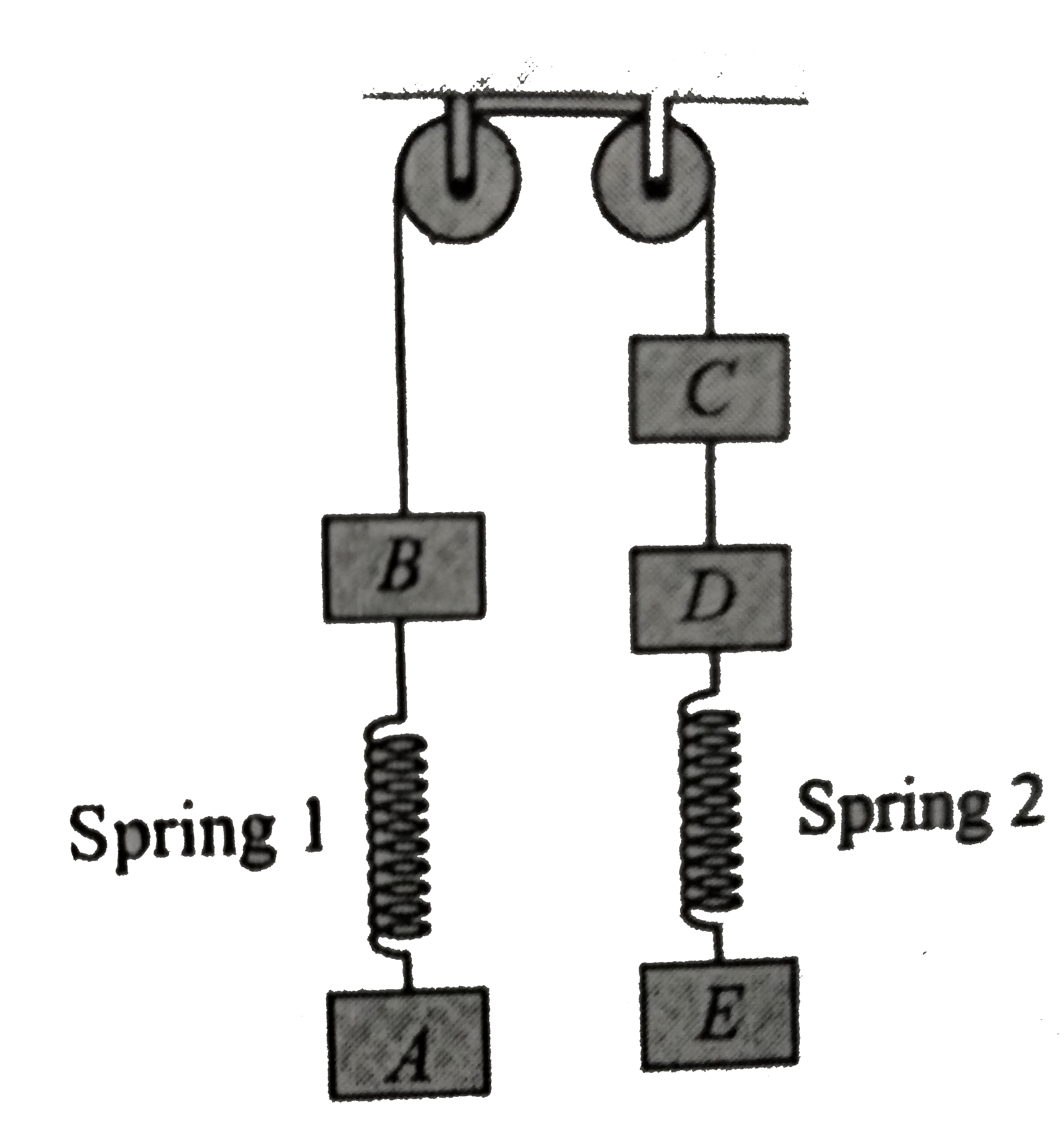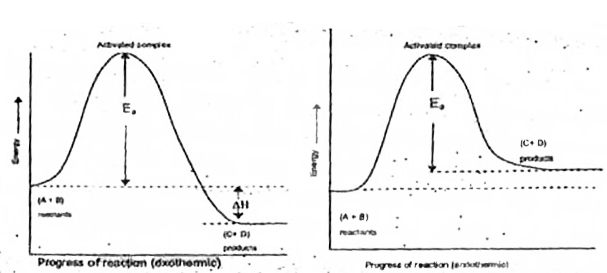When sunlight shines on the atmosphere, mass of CO2 at an altitude of 75 km undergo natural laser action. The energy levels involved in the action are shown in fig Population inversion occurs between levels E2andE1. 
66. The wavelength of sunlight exciting the molecules in laser action is
25010 Å
43015Å
52070Å
65080Å
The correct Answer is:B
hv=E2−E0
hcλex=E2−E0
λex=wavelength of exciting radiation
λexhc=1E2−E0
⇒λex=hcE2−E0
=6.63×10−34×3×108(0.289−0)×1.6×10−19m
=43015Å
Topper's Solved these Questions
- ATOMS, MOLECULES AND NUCLEIBOOK - MODERN PUBLICATIONCHAPTER - ATOMS, MOLECULES AND NUCLEIEXERCISE - MCQ (Level -II)
77 Videos
- ATOMS, MOLECULES AND NUCLEIBOOK - MODERN PUBLICATIONCHAPTER - ATOMS, MOLECULES AND NUCLEIEXERCISE - MCQ (Level -III)
9 Videos
- 15 MAGNETIC EFFECTS OF CURRENTSBOOK - MODERN PUBLICATIONCHAPTER - 15 MAGNETIC EFFECTS OF CURRENTSEXERCISE - Recent Competitive Questions
31 Videos
- CURRENT ELECTRICITYBOOK - MODERN PUBLICATIONCHAPTER - CURRENT ELECTRICITYEXERCISE - RECENT COMPETITIVE QUESTIONS
32 Videos
Similar Questions
Read the pasage given below as well as the adjoining energy level diagram and then answer the questions given after the passage .
As per Bohr's theory og hydrogen atom the energy of an atom in a state corresponding to principal quantum number n is given as :
En=−13.6n2eV
The energy of an atom is the least when its electron is revolving in an orbit closets to the nucleus i.e., the one for which n =1. This state is called the ground state. When a hydrogen atom receives energy by processes such as electron collision , the atom may acquire sufficient energy to raise the electron to higher energy states and the atom is then said to be in an excited state . From these excited states the electron can then fall back to a state of lower energy , emitting a photon in the process.
The energy level diagram for the stationary states of a hydrogen atom , compouted from Bohr's relation for energy , is given in Fig.12.02. The principal quantum number n labels the stationary states in the ascending order of energy . Obviously , the highest energy corresponds to n=∞ and has an energy of 0 eV. This is the energy of the atom when the electron is completely removed (r=∞) from the nucleus and is at rest.

Now answer the follwoing questions:
Find a relation between wavelengths of first line and series limit of hydrogen spectrum in vissible light.
View SolutionThe system shown in the figure is initially in equilibrium. A is of mass 2 m and B,C D and E are of mass m Certain actions are performed on the system. Every action has been taken individually when the system is intact. Find the direction and magnitude of acceleration of the blocks after each action of the following actions has been taken

(i)Spting 1 is cut(ii)Spring 2 is cut(iii)String between C and D is cut.(iv)String between B and C is cut.
View Solution
Knowledge Check
Which (if any) of the following are essential for laser action to occur between two energy levels of an atom?
AThere are more atoms in the upper level than in the lowerBThe upper level is metastableCThe lower level is metastableDThe lower level is the ground state of the atomSome energy levels of a molecule are shown in the fig. The ratio of the wavelengths r=λ1/λ2, is given by
 Ar=34Br=13Cr=43Dr=23
Ar=34Br=13Cr=43Dr=23A collision between high energy molecules overcomes the forces of repulsion and brings the formation of an unstable molecule cluster, called activated complex. The life span of an activatd complex is very small. Thus, the activated complex breaks either into reactants again or new substances, i.e. products. The activation energy (Ea) depends upon the nature of chemical bonds undergoing rupture and is independent of enthalpies of reactants and products. The energy changes during exothermic and endothermic versus the progress of the reaction are as shown below :

When temperature is increased, the number of active molecule increases, i.e. the number of effective collisions will increase and the rate of reaction will increase.
Activation energy (Ea)=E(activated complex)−E(ground state)
ΔH=Ea(f)−Ea(b)
The activation energy for the forward reaction , X→Y, is 60kJmol−1 and ΔH is −20kJ/mol−1, the activation energy for the reverse reaction isA40kJ/molB60kJ/molC80kJ/molD20kJ/mol
The system shown in the figure is initially in equilibrium. A is of mass 2 m and B,C D and E are of mass m Certain actions are performed on the system. Every action has been taken individually when the system is intact. Find the direction and magnitude of acceleration of the blocks after each action of the following actions has been taken

(i)Spting 1 is cut(ii)Spring 2 is cut(iii)String between C and D is cut.(iv)String between B and C is cut.
View SolutionA 20g bullet pierces through a plate of mass M1=1kg and then comes to rest inside a second plate of mass M2=2.98kg as shown in Fig. It is found that the two plates, initially at rest, now move with equal velocities. Find the percentage loss in the initial velocity of the bullet when it is between M1 and M2. Neglect any loss of material of the plates due to the action of bullet.

View SolutionIn the helium-neon laser of laser action occurs between two excited states of the neon atom. However, in many lasers, laser action (lasing) occurs between the ground state and an excited state, as suggested in fig.
(a) Consider such a laser that emits at wavelength λ=550nm. If a population inversion is not generated what is the ratio of the population of atoms in state Ex to the population in the ground state E0, with the atoms at room temperature?
View SolutionA 20g bullet pierces through a plate of mass M1=1kg and then comes to rest inside a second plate of mass M2=2.98kg as shown in Fig. It is found that the two plates, initially at rest, now move with equal velocities. Find the percentage loss in the initial velocity of the bullet when it is between M1 and M2. Neglect any loss of material of the plates due to the action of bullet.

View SolutionThe rate of reaction (dxdt) varies with nature, physical state and concentration of reactants, temperature, exposure to light and catalyst, whereas rate constant (K) varies with temperature and catalyst only. The rate constant K is given as K=Ae−Ea/RT where A is Arrhenius parameter or pre-exponential factor and Ea is energy of activation. The minimum energy required for a reaction is called threshold energy and the additional energy required by reactant molecules to attain threshold energy level is called energy of activation.
The temperature coefficient of reaction I is 2 and reaction II is 3. Both have same speed at 25∘C and show I order kinetics. The rati of rates of reaction of these two at 75∘C is:
View Solution
